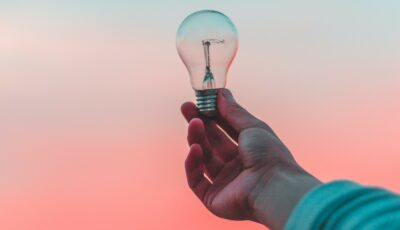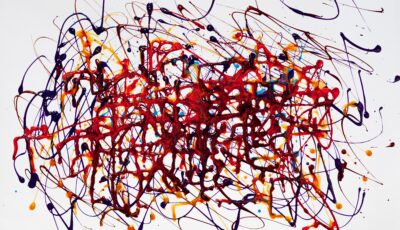Can AI-created works be protected by copyright?
AI-created works and copyright: Key insights
- The amount of originality required is the same for humans and AI
- A proximity between human and AI-creativity has to be established
- Whether AI-created works can be protected by copyright will likely be decided on a case-by-case basis
In December 2018, the first AI-created work to be auctioned was sold by Christie’s for $432’500.1 The portrait of Edmond Bellamy was created by the Paris-based collective “Obvious”2 using a technology called Generative Adversarial Network (GAN). It exemplified the entrance of AI in the art market. This impressive technological achievement, however, raises an important question: Can AI-created works be protected by copyright? In this article, we will outline the two requirements of copyright under Swiss law and their implication for AI-created works.
First condition: The work must have an individual (original)3 character
No work can be protected by copyright without having an original character. The threshold of originality required for a work to be copyrighted is rather low and it can be protected irrespectively of its value or purpose. The judge examines the individual character of a work independently of its artistic quality. Moreover, the originality of a work shall emanate from the work itself and not from its author which means that a work that would be considered original enough if created by a human will also be considered original enough if created by an AI. These considerations apply as long as the work is not a mere copy of a pre-existing work.
Despite never been confirmed by a court, it is almost unanimous that AI-created works such as the portrait of Edmond Bellamy,4 the painting of the “Next Rembrandt” project,5 or the works exhibited by the robot Ai-Da at the University of Oxford6 will fulfil the requirement of individuality. Indeed, they are not copied from pre-existing works and would be considered original had they been created by human beings.
Second condition: The work must be an intellectual creation
According to this second requirement, the work must be shaped by human will and be an expression of thought. The problem is that as long as creativity is defined in terms of human consciousness, AI, no matter how sophisticated it becomes, will never reach that level. Therefore, we need to find sufficient proximity between human creativity and the AI-created work. Put simply, we have to establish that the work was not only created thanks to AI but also thanks to the human behind the machine.
To illustrate this concept, it is useful to take a step back and consider the example of photography. When cameras were invented, it was unconceivable to most that a photograph could be protected by copyright since it is, in effect, created by the camera. However, the Swiss Federal Court ruled in the famous Marley Case7 that a photograph could be copyrighted based on the photographer’s creative decisions regarding lighting, framing, and timing.
Applying this reasoning to AI-created works means that they could indeed be protected if the AI’s creator engineered it to operate within an arbitrary aesthetic framework. For example, the team of the “Next Rembrandt” project set up their AI to create a painting that could be a Rembrandt. To do so, they narrowed down the potential final painting to a “portrait of a Caucasian male with facial hair, between the ages of thirty and forty, wearing black clothes with a white collar and a hat, facing to the right”.8 They also fed the AI a large data set chosen by experts and finally let the AI generate this new unique painting in the style of Rembrandt.
The situation is still unclear, however there are good reasons to argue that such an AI-created work could be protected by copyright. Indeed, the painting is undoubtedly original. It is also not copied since this portrait was never seen and it was only inspired by Rembrandt’s works and style. Besides, there’s a proximity with human creativity since the team took creative decisions to set the parameters in which the AI generated the painting in the same way that a photographer set up her camera to compose her picture. Furthermore, the creation of the algorithm of the AI in itself is not enough to own the copyright of every work created by this AI. The human decisions must influence the final result. In the case of the Rembrandt painting, the team not only programmed the AI but also instructed it to act within a given aesthetic framework for this specific painting. It is especially because of this second characteristic that the team could potentially claim ownership of the final painting.
Today’s situation and a glimpse into the future protection of AI-created works
These considerations are not only theoretical and other questions will certainly arise. A team at the Lucerne University of Applied Sciences and Arts currently runs a project in which AI is designing new IKEA furniture based on the existing IKEA catalogue. The question there is not only if the AI-designed furniture enjoys copyright protection, but also if and to what extent previous copyrighted work (such as IKEA furniture design) can be used to ‘inspire’ the AI. Given their rising practical importance, court cases and future laws are likely to clarify these questions in a near future. In 2017, the European Commission on Civil Law Rules on Robotics notably started to investigate these questions and is considering the possibility of a special legal status for AI.9 In the meantime, solutions are arising from several authors who are proposing ways to solve the copyright ownership problem for AI-created works. Two of these solutions are notably advocating to allocate the ownership of the copyright either to the publisher10 or to the commissioner11 of the AI-created work.
No court has yet ruled to confirm or infirm this reasoning and the legal situation remains, therefore, unclear. However, it is likely that the decisions to allow an AI-created work to be copyrighted will be made on a case-by-case basis. Such decisions will depend on the amount of originality and the given proximity between human and AI-creativity. Consequently, it is recommended to keep human creativity involved in the process of making AI-created works until the law is amended.
Sources:
- 1www.christies.com/features/A-collaboration-between-two-artists-one-human-one-a-machine-9332-1.aspx
- 2http://obvious-art.com/
- 3 Please note that “originality” and “individuality” are synonymous in this case. Indeed, the Swiss Copyright Act refers to the notion of “individuality” while Swiss courts refer to the notion of “originality” in accordance with the European practice.
- 4 www.christies.com/features/A-collaboration-between-two-artists-one-human-one-a-machine-9332-1.aspx
- 5www.nextrembrandt.com
- 6https://www.bbc.com/news/uk-england-oxfordshire-48498853
- 7 DFT 130 III 172.
- 8https://www.nextrembrandt.com/
- 9 European Parliament resolution of 16 February 2017 with recommendations to the Commission on Civil Law Rules on Robotics (2015/2103(INL)), §59 F.
- 10 See notably: Ramalho A. (2017). Will robots rule the (artistic) world? A proposed model for the legal status of creations by artificial intelligence systems. Journal of Internet Law. Retrieved November 20, 2019, from papers.ssrn.com/sol3/papers.cfm
- 11 See notably: Yaniksy-Ravid S. & Liu X. (2018). When Artificial Intelligence Systems Produce Inventions: the 3a Era and an Alternative Model for Patent Law. Cardozo Law Review. Vol. 39. Retrieved November 20, 2019, from papers.ssrn.com/sol3/papers.cfm




